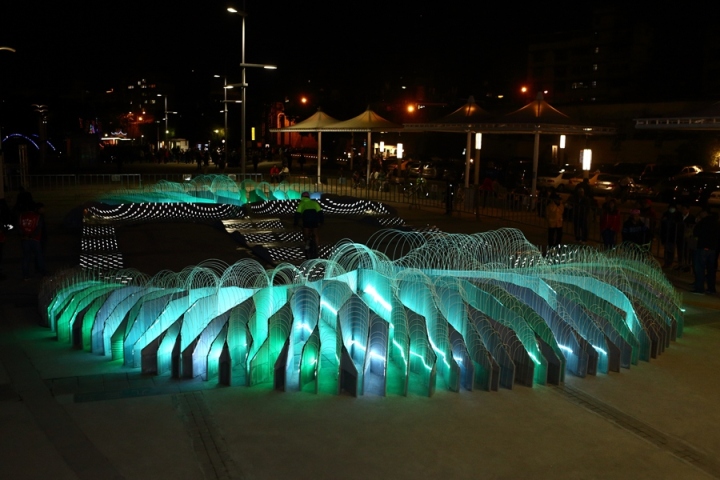The Role of Color in Light Installations
In 2019, the "Chromatic" exhibition at the Museum of Modern Art in New York showcased how color can transform spaces. Visitors were greeted by a room bathed in deep blue light, which research shows can induce calmness and reduce stress levels. This use of color is not arbitrary; it is grounded in scientific studies that explore how different wavelengths of light affect human emotions.
Emotional Responses to Color

Colors have specific psychological effects. For instance, red light can increase heart rate and stimulate excitement, while green is often associated with tranquility and balance. Interactive installations, like those seen at the "Light Festival" in Amsterdam, use these principles to evoke specific emotional responses. By allowing visitors to change the color of the light, these installations create a personal and immersive experience.

Technology Behind Interactive Installations

Modern light installations often use LED technology, which allows for a wide range of colors and intensities. At the "Lumiere London" festival, artists used programmable LEDs to create dynamic displays that responded to audience movement. This interaction is made possible through sensors and software that adjust the light based on real-time data, creating a unique experience for each visitor.
Case Study: TeamLab Borderless
TeamLab Borderless in Tokyo is a prime example of how interactive light installations can create emotional impact. The digital art museum features rooms where light and color change in response to visitor movements. In one exhibit, a gentle wave of pink light follows guests, creating a sense of connection and engagement. This installation demonstrates how technology and art can merge to produce profound emotional experiences.
Future Directions in Light Art
As technology advances, the potential for interactive light installations continues to grow. Artists are exploring the use of augmented reality to enhance these experiences further. For example, future installations might allow visitors to use their smartphones to alter the light environment, adding another layer of interaction. This evolution will likely lead to even more personalized and emotionally resonant installations.











0 comments